Stop Normalizing Unprofessional Agile Behavior
Highlights the importance of professionalism in agile teams, warning against excusing unprofessional behaviour as agility and stressing ethical, …
Helping companies navigate the realities of business agility and not just be technically agile! Regular content on Scrum, Agility, & DevOps!


Highlights the importance of professionalism in agile teams, warning against excusing unprofessional behaviour as agility and stressing ethical, …
Covers key responsibilities, skills, and requirements for hiring a Scrum Master, including leadership, coaching, facilitation, and fostering effective …
Explains how Scrum teams rely on three key roles, Influencers, Entrepreneurs, and Makers, to balance leadership, value creation, and technical …
Explores the shift from traditional management to leadership focused on inspiration, effectiveness, and servant leadership, with insights for Scrum …
Technical debt increases risk to products and businesses, leading to hidden costs, reduced quality, and slower delivery. Ignoring it can harm …
Learn about becoming a Professional Kanban Trainer, the Applying Professional Kanban course, certification process, and key Kanban principles for …
Explores how Taylorism shaped modern management, leading to rigid hierarchies, bureaucracy, and dehumanising work practices that persist beyond …
Explains how the Sprint Goal serves as an immediate tactical objective in Scrum, guiding teams toward strategic Product Goals and maximising value …
Explains why relying on story points and velocity signals team immaturity in Scrum, and highlights better ways to build confidence and predictability …
Explains how to gather key metrics for evidence-based management in software organisations, focusing on value delivery, time to market, and ability to …
Validating product value requires releasing features to real users in production, gathering feedback, and measuring usage, satisfaction, and business …
Explains how product goals serve as intermediate strategic goals, guiding agile organisations through uncertainty using experimentation, outcomes, and …
Explains why regular backlog refinement is essential in Scrum, how to make backlog items ready for Sprint Planning, and ways to measure effective …
Explains how to create, apply, and improve a Definition of Done (DoD) in Scrum to ensure software quality, transparency, and consistent delivery of …
Explains why staggered iterations harm software delivery, increasing technical debt, and recommends cross-functional teams, test-first, and working …
Explains how adopting test-first practices in software development improves quality, reduces bugs, and enables confident continuous delivery by …
Professional Scrum Teams prioritise software quality, accountability, and continuous improvement, ensuring each release is reliable, defect-free, and …
Explains how the Sprint Goal guides Scrum teams by providing a clear, shared objective for each Sprint, ensuring focus, transparency, and alignment …
Explores how agile teams can achieve predictable software delivery through quality focus, effective release planning, and continuous improvement, …
Defines the Product Goal as a clear, measurable objective in the Product Backlog that guides Scrum Teams, ensuring focus, transparency, and alignment …
Summarises key changes in the 2020 Scrum Guide, including simplified language, self-managing teams, and new commitments for goals, backlog, and …
Explores how advances in technology have redefined co-location, emphasising the importance of video presence for effective online communication and …
Change in organisations is a continuous, evolutionary process driven by experimentation and adaptation, not a one-time transformation or fixed end …
Explains why rejecting individual backlog items at Sprint Review is a misconception, highlighting Scrum’s focus on learning, collaboration, and …
Explores how resistance to change and outdated mindsets hinder organisational agility, stressing the need for adaptable, forward-thinking teams in …
Explores how organisations adopt SAFe for agility but risk rigid bureaucracy, highlighting the need for genuine business evolution over prescriptive …
Step-by-step guide to setting up Microsoft Teams for live virtual training, covering Azure AD, Microsoft 365, guest access, external identities, and …
Guidance on running live virtual Scrum classes using Microsoft Teams and Mural, focusing on tech setup, safe collaboration, self-organising teams, and …
Explores how live virtual classrooms have become effective alternatives to in-person training, highlighting benefits, challenges, and the shift to …
Explores how agile teams use DevOps and Site Reliability Engineering to deliver high-quality software rapidly, with insights from Microsoft’s Azure …
Explores the origins of Taylorism in modern management, its impact on workplace practices, and how to identify ineffective or superficial Agile …
Explores why most organisations struggle to scale agile practices, highlighting key principles and strategies used by rare, successful companies to …
Martin Hinshelwood answers questions on integrating UX into Scrum teams, sharing practical advice from his experience teaching Professional Scrum with …
Explores the benefits and challenges of collocation in Scrum teams, comparing face-to-face collaboration with remote work, and offering practical …
The Definition of Done can evolve to improve quality but should not be weakened or vary per backlog item. Consistency ensures transparency and …
Guidance on resolving conflict in Scrum Teams, including facilitation techniques, escalation steps, and the Scrum Master's role in fostering healthy …
Explains how a Product Owner can manage Sprint Planning across multiple Scrum teams in Nexus by delegating, using area or team owners, and maintaining …
Explains when a Scrum Master should remove impediments, focusing on team self-sufficiency, true impediments, and supporting team growth within Scrum …
Guidance on addressing issues with multiple Product Owners in Scrum, highlighting the need for clear backlog ownership and accountability to ensure …
Explains how to create reliable forecasts in agile projects by using flow metrics like cycle time and throughput, and shifting from project-based to …
Technical skills are not required to be a Scrum Master, but understanding technical, business, and organisational contexts helps Scrum Masters better …
Explores whether Scrum Teams should adopt No Estimates, comparing estimation methods, team maturity, and metrics like cycle time, throughput, WIP, and …
Explains how to integrate Design Sprint activities within Scrum by embedding design and UX work into regular sprints and backlog refinement, avoiding …
The US Department of Defence now requires agile, iterative software development, ending mandatory waterfall methods and influencing global government …
Learn how Kanban practices can be integrated into Professional Scrum teams to improve workflow, transparency, and delivery using the new Scrum.org PSK …
Explains how Scrum teams can strategically allow unfinished work to flow across Sprint boundaries, enhancing throughput, responsiveness, and …
Explains how involving everyone in Professional Scrum training fosters organisational agility, breaks down silos, and empowers teams to drive …
Learn how to achieve organisational agility by tailoring change to your unique context, building a guiding coalition, and engaging all stakeholders in …
Summary of 2017 conferences, talks, and training on Agile, DevOps, Scrum, and team leadership, with insights from global workshops and upcoming course …
Learn key practices for adopting modern source control and DevOps, including automation, release pipelines, and team collaboration to improve software …
Professional Scrum training introduced Ghana Police officers to Agile methods, using hands-on sprints to support organisational change and …
Explores the Ghana Police Service’s shift to a modern, professional model using servant leadership, agile frameworks, and strategic change to restore …
Explains how Scrum and Continuous Delivery work together, highlighting their complementary roles in agile software development and practical …
VSTS Sync Migration Tool adds new features and bug fixes for bulk work item updates, project migration, query transfer, and improved notifications for …
Explores why professionalism and adherence to engineering excellence are essential for effective Scrum teams, highlighting common pitfalls of amateur …
Explains why Sprints are valuable even with continuous delivery, highlighting benefits for planning, feedback, communication, and predictability in …
Guidance on selecting the best process template for team projects in TFS or VSTS, highlighting why the Scrum template reduces friction for agile teams …
Explains the UK Government Cloud First policy, its mandate for public cloud adoption in central government, and challenges faced by public sector …
Explores the contrast between unprofessional "kalabule" practices and true professionalism in Agile software development, emphasising core values and …
Open-source tools for migrating work items, test plans, teams, and project structures between TFS and VSTS, supporting consolidation and flexible data …
If you've made it this far, it's worth connecting with our principal consultant and coach, Martin Hinshelwood, for a 30-minute 'ask me anything' call.
We partner with businesses across diverse industries, including finance, insurance, healthcare, pharmaceuticals, technology, engineering, transportation, hospitality, entertainment, legal, government, and military sectors.

YearUp.org

Trayport

Lockheed Martin

Philips

Microsoft

Workday

Brandes Investment Partners L.P.

Healthgrades

Illumina

Xceptor - Process and Data Automation
CR2

Schlumberger

Capita Secure Information Solutions Ltd

Bistech

Boeing

Emerson Process Management

Lean SA

Big Data for Humans

Washington Department of Transport

Ghana Police Service

Department of Work and Pensions (UK)

Royal Air Force

Washington Department of Enterprise Services

Nottingham County Council

Akaditi

Ericson

Healthgrades

Lean SA

Flowmaster (a Mentor Graphics Company)

Philips